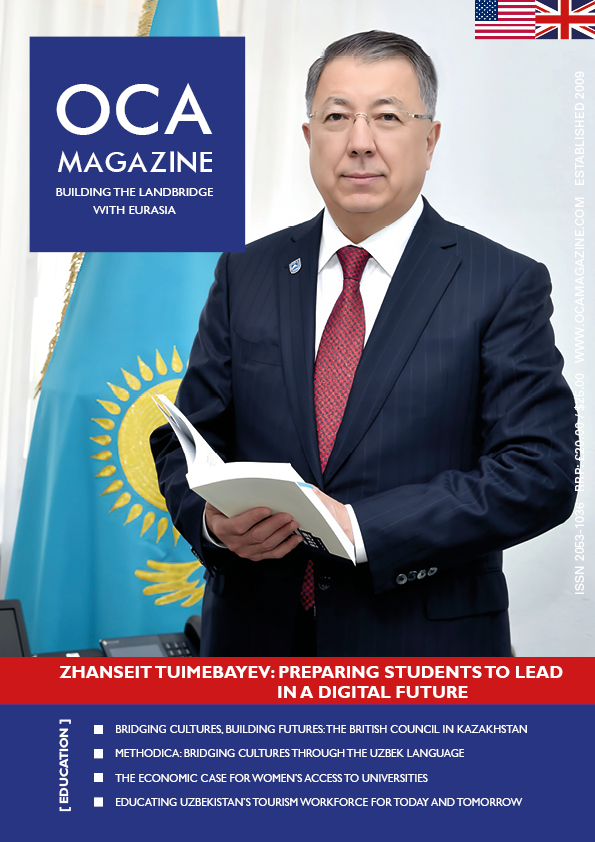I’m delighted to introduce another brimming issue of OCA Magazine, where we continue our commitment to exploring the dynamic and critical role of education in Central Asia and the Caucasus. As nations across Central Asia seek to modernise and diversify their economies, education lies at the heart of these ambitions — not only as a tool for development but as a vital means of preserving identity, fostering innovation, and connecting with the wider world.

The landscape of education in Central Asia has changed dramatically over the past three decades. The post-Soviet era ushered in a wave of reform, with countries across the region working to re-establish their national languages, histories, and educational priorities. New universities have been founded, international partnerships forged, and ambitious reforms launched. Yet, challenges persist — from unequal access in rural communities to outdated curricula and under-resourced institutions. Indeed this issue looks at the risks of educating and developing only half the population as some areas go backwards in how they address and limit access for women in education.

Now, as we find ourselves in a rapid global technological revolution, the question for Central Asia’s educators and policymakers is how to harness new tools, particularly artificial intelligence, while safeguarding the region’s rich cultural heritage. AI has the potential to transform education — from personalised learning systems that can adapt to a student’s needs, to improved data management and research capabilities for universities seeking to elevate their global standing. But, as with any powerful tool, its integration must be thoughtful, inclusive, and aligned with local values and culture.
In this issue, we shine a spotlight on the people and institutions leading this charge. You’ll find profiles of universities, told by their rectors and staff, that are not only bringing international standards of teaching and research to the region but doing so while remaining deeply rooted in local traditions and languages. These institutions understand that a truly world-class education does not mean abandoning heritage, but rather finding new ways to express and share it.
We also examine the broader societal impact of these developments. How can Central Asian countries ensure that rural and marginalised communities are not left behind in the digital age? What role can AI and technology (like Methodica) play in reviving traditional languages and driving cultural diplomacy? And, crucially, how do young people themselves perceive these changes, as they navigate between the worlds of ancient nomadic poetry and cutting-edge coding academies?
As ever, OCA Magazine aims to present a balanced, people-centred view of these issues. Our contributors this issue include educators, entrepreneurial innovators and students — each offering their perspective on how the region might strike this delicate balance between progress and preservation. We also compare East African learnings on education that can be applied in the region and examine Moldova’s gradual approach of combining Soviet-era legacies, European benchmarks and distinct national features into their education system.
I hope this edition inspires thoughtful reflection and sparks new conversations about the future of education in Central Asia. The challenges are real, but so too is the potential for this region to become a leader in demonstrating how tradition and technology can coexist — and indeed, enrich one another.
Happy reading.
NICK ROWAN
EDITOR–IN–CHIEF
OPEN CENTRAL ASIA MAGAZINE
